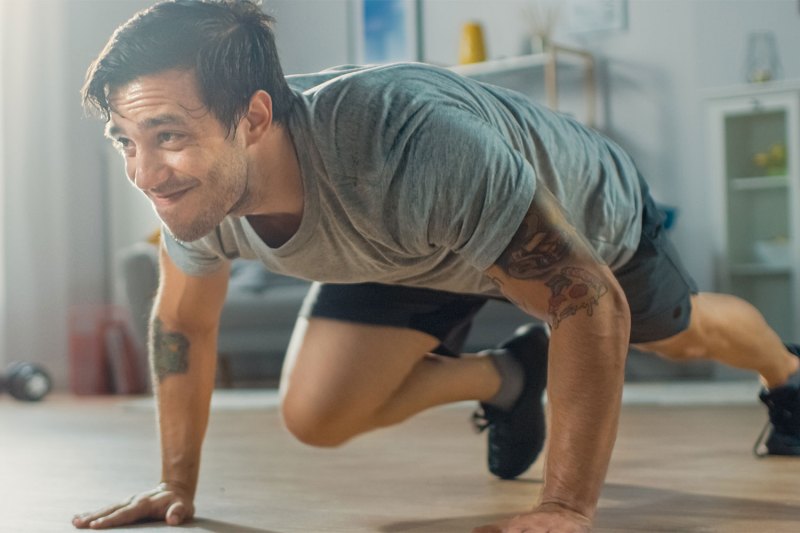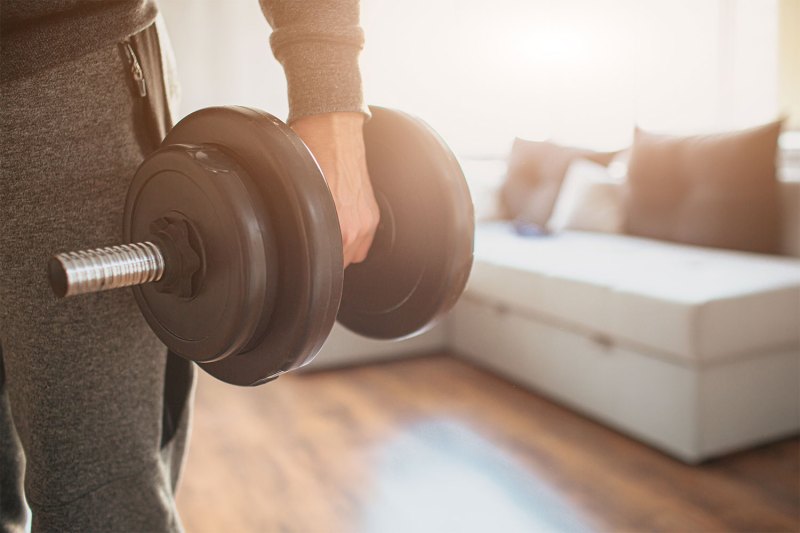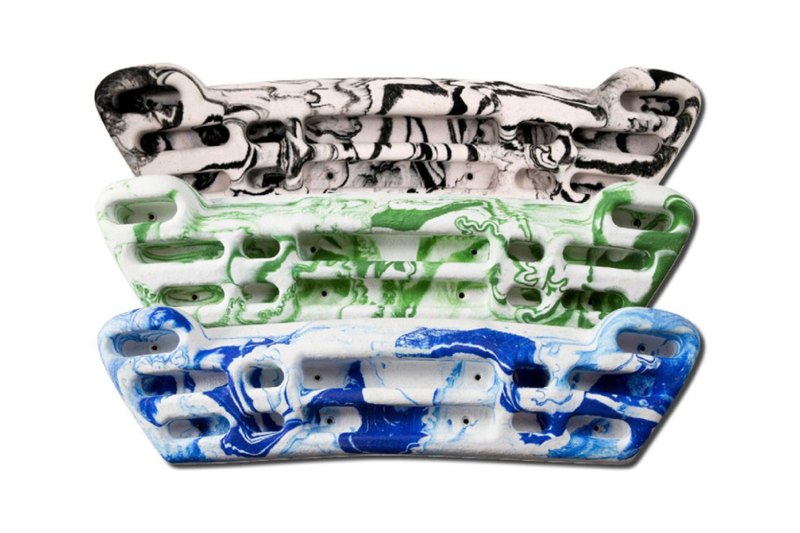Fans of PBS’s Expedition know that expert climbing and rappelling skills can open up some otherwise inaccessible — but beautiful — places in nature. Besides providing access to the great outdoors, if you watch movies like Free Solo or are keeping your Reel Rock subscription up to date, it’s hard not to admire the fitness level — from amazing back muscles to vise-like grip strength — that these climbers demonstrate.
We talked to Mickey Ashmont, brand head coach for The Gravity Vault Indoor Rock Gyms to learn a little more about the sport of climbing. One of the reasons those climbers are in such great shape is that, in climbing, they are using almost every muscle in their bodies. “It’s all about connecting body tension from your hands all the way to your feet, says Ashmont. “The toughest part is grip strength, so building up a base of forearm strength will jump-start your climbing career. Beyond that, most of the focus for climbing is on the shoulders and the anterior chain muscles that run down the back. A strong core is extremely important.”
If you’re interested in trying the sport, you’ll want to spend some prep time in a climbing gym first; but that can be difficult while we wait for all of our favorite workout centers to reopen. We asked Ashmont for a little guidance and for some Alex Honnold-inspired moves to try at home. He recommends the following to start, but he recently produced a series of videos called Training with Coach Mickey for Gravity Vault that offers further Workout From Home guidance. There you can see basic climbing exercises demonstrated, as well as instruction on how to “Beta Read” a climb before starting; breathing for focus, composure, and endurance; and how to fall with skill.
Climber Taps

Ashmont recommends training the core with this exercise.
- Take a high plank position and brace your abdominal muscles.
- Move one hand to the opposite foot, tapping the foot with your hand beneath your body.
- Alternate from side to side, and go for a full minute. Don’t worry about reps.
Finger Curl

If you have a few dumbbells, this is a great way to train the forearms.
- Stand, making sure you’re maintaining straight posture.
- Hold a dumbbell in either hand.
- With palms facing forward, slowly uncurl the weight until you are just about to drop it.
- Slowly recurl the weight. Opening and closing your hands like this will generate a nice burn in your forearms.
Overhead Shoulder Press

Ashmont likes these for injury prevention; particularly to the shoulders or rotator cuffs. You can do this with dumbbells, kettlebells, or even a resistance band. He likes using free weights because they help build stability.
- Stand with feet slightly less than shoulder distance apart. Raise your arms to shoulder height, bending at the elbow and reaching up with the hands, forming strong “L’s.” Be sure to keep the arms in line with the body; don’t allow them to come forward.
- Reach directly overhead. Be sure to complete the movement, locking the elbows so your arms are now completely parallel.
- Return to the starting position.
Finger Board

Ashmont says that Finger or Training Boards are “A great tool to train your tendons, which prevents some common climbing injuries. In Free Solo, you can see that some of the holes Honnold is using are tiny.”
Using a board is pretty straightforward (just make sure it’s attached securely to the wall).
- Start by grabbing the board where you feel comfortable with an open-handed four-finger hold using both hands on opposite sides of the board.
- Hang for 7 seconds, rest for 3 seconds. Repeat a total of 6 times.
- Rest for 3 mins, repeat 2 or 3 times.
- Hang with a slight bend in the arm, keeping the muscles somewhat contracted. (Don’t just “hang loose:” that can cause injury to shoulder and elbow joints.)
- As you grip becomes stronger, work your way through the board using fewer fingers and tighter grips.
We asked Ashmont if cardio was considered an important part of climbing training. “Cardio health does translate to climbing. On long climbs, fatigue can set in, and a lot of that comes from muscles not getting enough oxygen. Plus hiking into the mountains themselves can be a bit of a workout.”
Ashmont’s home base is the Hoboken, New Jersey Gravity Vault location. So where does he like to go climbing? “I’m a local boy. I think the best climbing is in New Paltz, New York, in the Shawangunk Mountains.“ He’s been at it for twenty years, starting when still in high school.
“Climbing can be intimidating,” he admits, “but it’s the most welcoming community. Ninety-nine percent of people — even the most experienced climbers — will offer to help you. What’s also great about climbing is that, although the first few weeks can be hard, you’ll see huge leaps in strength and climbing ability in just a few months. Maybe the best part if that, as you’re climbing around you really feel like a kid again!”



